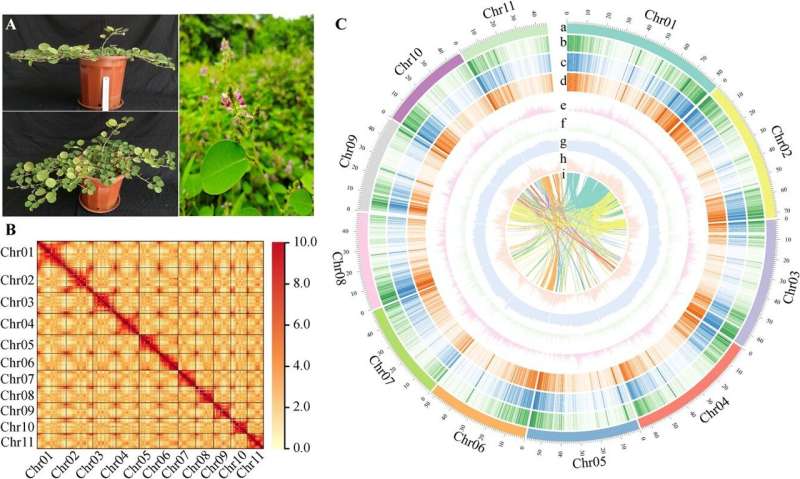
A study has demystified the genetic underpinnings of schaftoside, a vital compound in traditional Chinese medicine (TCM) with potential as a COVID-19 therapeutic.
The research decodes the biosynthetic pathway and uncovers gene expansions within the Grona styracifolia genome, providing critical insights for optimizing the production of this promising medicinal agent. This breakthrough could transform the cultivation and utilization of bioactive plants, paving the way for enhanced drug development against COVID-19 and other diseases.
Traditional Chinese medicine (TCM) has demonstrated effectiveness in treating various illnesses, including COVID-19. Schaftoside, a bioactive compound from Grona styracifolia, inhibits SARS-CoV-2 enzymes and enhances the immune response. Despite its potential, the biosynthetic pathway of schaftoside remains unclear.
Given these challenges, a deeper understanding of the genetic mechanisms behind schaftoside production is essential. This study aims to uncover these pathways, contributing to the development of new antiviral treatments based on TCM.
In a recent study published on March 30, 2024, in Horticulture Research, a team from South China Botanical Garden and other institutions successfully sequenced and assembled the genome of Grona styracifolia. This study uncovers the genetic basis for the biosynthesis of schaftoside, providing a foundation for its potential use in COVID-19 treatment.
The study sequenced and assembled the genome of Grona styracifolia, revealing it did not undergo recent whole genome duplication but shares an ancestral polyploidy event with other legumes. This event expanded key genes, including chalcone synthase (CHS) and isoflavone 2′-hydroxylase (HIDH).
Additionally, Grona styracifolia (Osbeck) H.Ohashi & K.Ohashi (GSO) -specific tandem gene duplication resulted in the expansion of C-glucosyltransferase (CGT) genes, crucial for schaftoside biosynthesis. Integrative analyses identified 13 CGTs and eight HIDHs involved in this pathway. Functional studies using transgenic systems and in vitro assays confirmed the roles of these genes in schaftoside production.
The study highlights the unique genetic architecture of Grona styracifolia that supports robust schaftoside biosynthesis, offering insights that could facilitate its use as a pharmaceutical resource for developing treatments, including potential COVID-19 therapies.
Dr. Shaohua Zeng, the study’s first author, stated, “The genomic insights gained from this study provide a significant step forward in understanding the biosynthesis of schaftoside. This knowledge not only enhances our grasp of traditional medicinal plants but also opens new avenues for developing effective treatments against COVID-19.”
The high-quality genome assembly of Grona styracifolia serves as a valuable resource for future genetic and pharmaceutical research. Understanding the biosynthesis of schaftoside could lead to the development of new antiviral drugs, particularly against COVID-19. This research underscores the importance of exploring traditional medicinal plants for modern medical applications.
More information:
Shaohua Zeng et al, The high-quality genome of Grona styracifolia uncovers the genomic mechanism of high levels of schaftoside, a promising drug candidate for treatment of COVID-19, Horticulture Research (2024). DOI: 10.1093/hr/uhae089
Citation:
Decoding Grona styracifolia: The genome behind a promising COVID-19 drug candidate (2024, July 2)
retrieved 3 July 2024
from https://phys.org/news/2024-07-decoding-grona-styracifolia-genome-covid.html
This document is subject to copyright. Apart from any fair dealing for the purpose of private study or research, no
part may be reproduced without the written permission. The content is provided for information purposes only.







